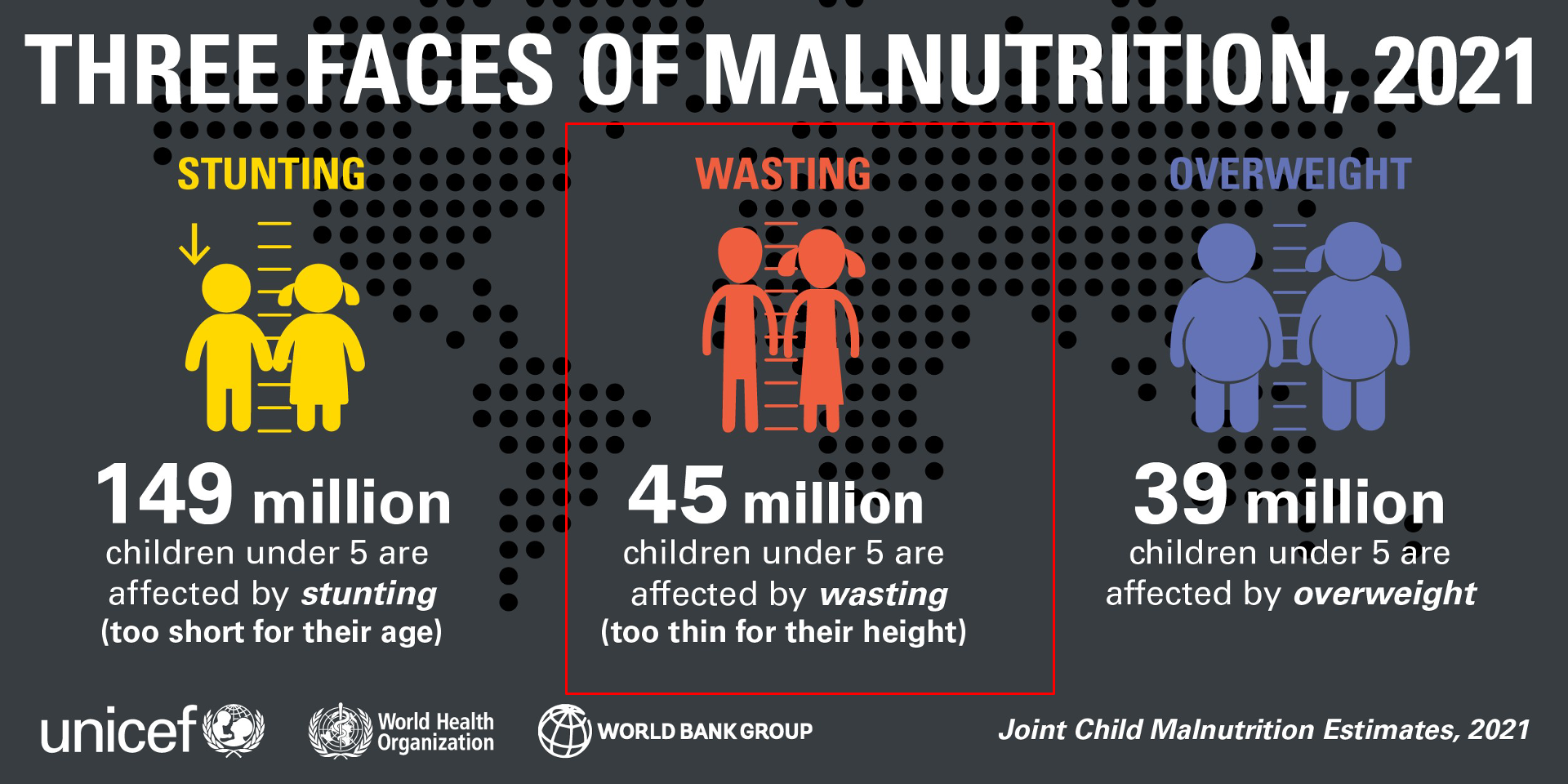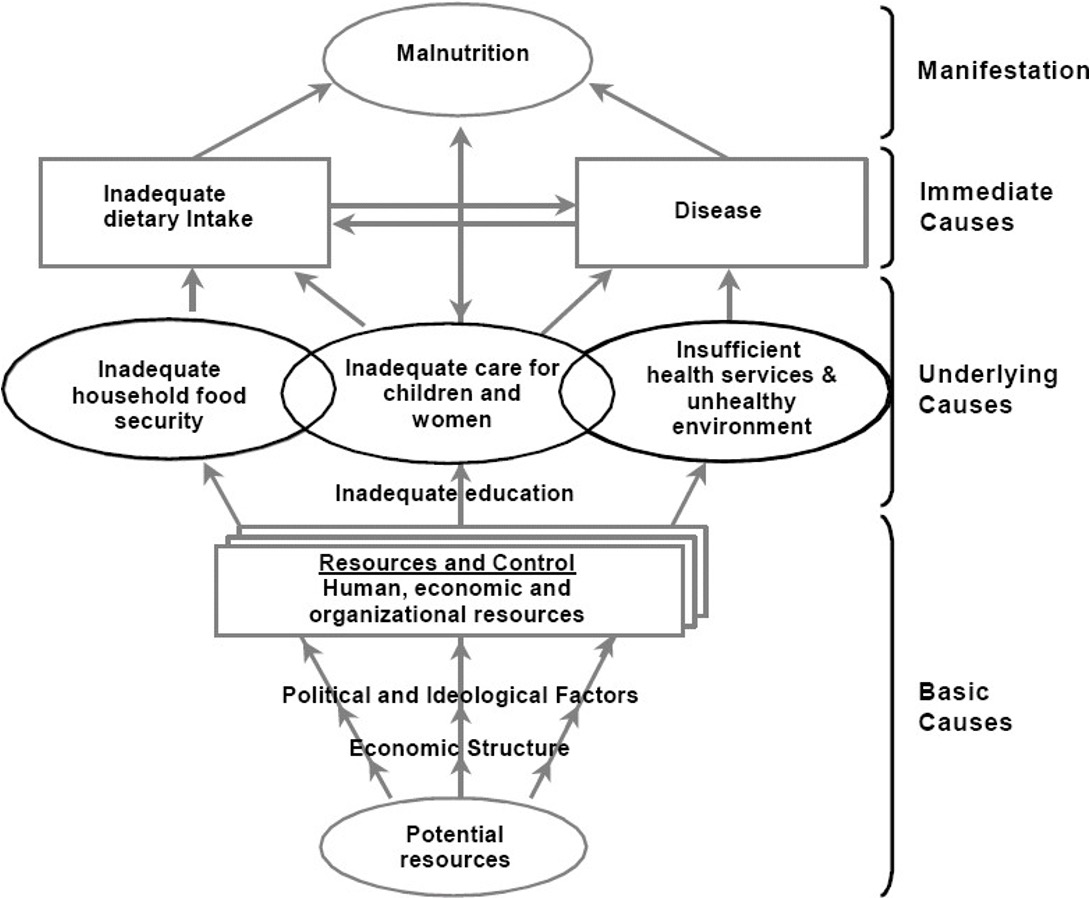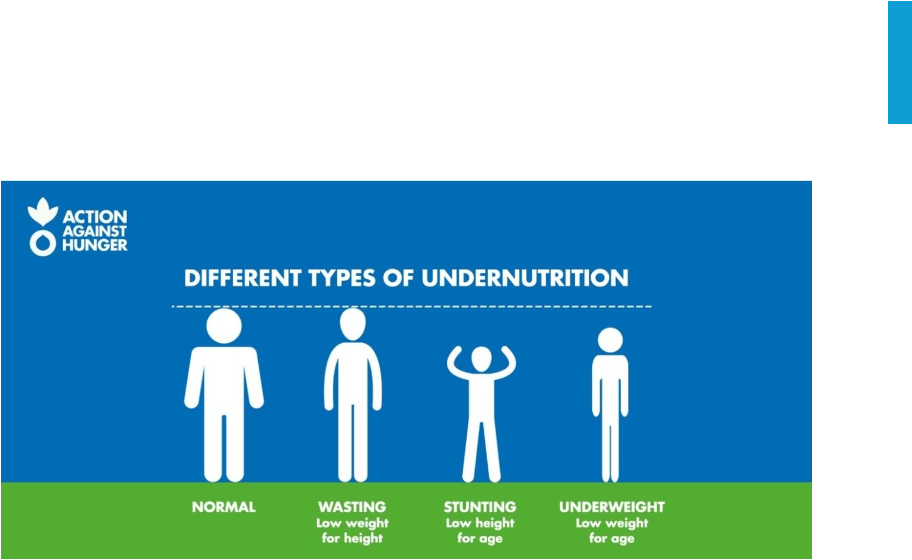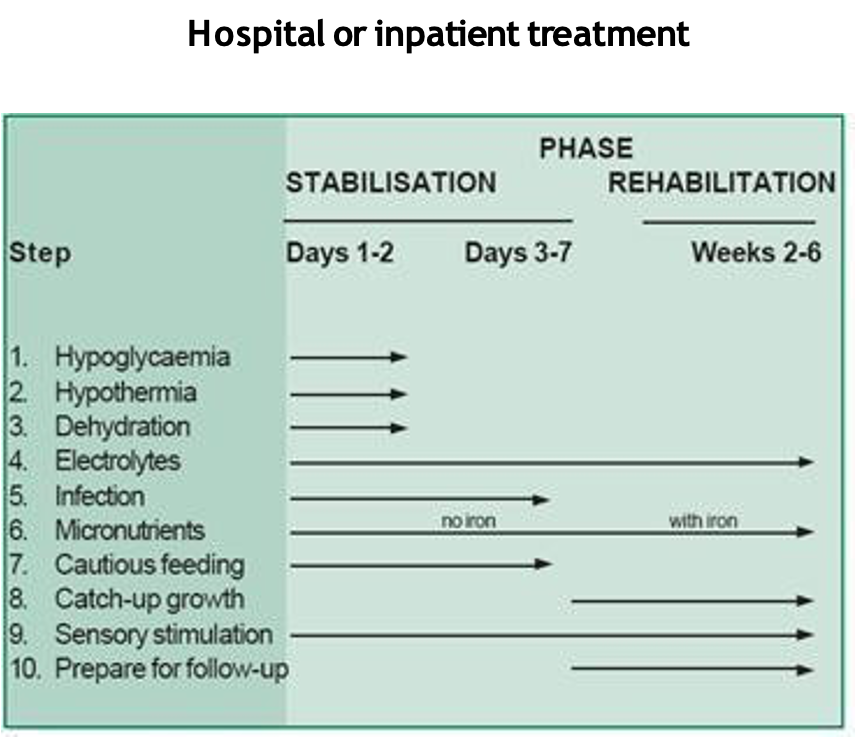Module 6.2- Screening and management of Acute Malnutrition in Children under 5 years of age
1/19
There's no tags or description
Looks like no tags are added yet.
Name | Mastery | Learn | Test | Matching | Spaced |
|---|
No study sessions yet.
20 Terms
three faces of malnutrition
Canada doesn’t provide info to this
Today we are talking about wasting
People like to focus on stunting because it’s a bigger problem- but those wasting will die

Under-nutrition
malnutrition caused by an inadequate food supply or an inability to use the nutrients in food.
Edema or Oedema
the abnormal fluid accumulation in the interstitial spaces of tissues such as the pericardial sac, intra-pleural sac, peritoneal cavity, or joint capsules.
Food security
refers to physical and economic access to food of sufficient quality and quantity
Nutrition security
refers to secure access to food coupled with a sanitary environment, adequate health services, and knowledgeable care to ensure a healthy life.
Z score
a normalized value created from a member of a set of data by expressing it in terms of standard deviations from the median.
Causes of malnutrition- 4
•Food: Inadequate household food security(limited access or availability of food)
•Nutrition: Inadequate access to food coupled with unsanitary environment, inadequate health services, and lack of knowledgeable care to ensure healthy life.
•Health: Limited access to adequate health services and/or inadequate environmental health conditions.
•Care: Inadequate social and care environment in the household and local community, especially in regard to women and children.
Conceptual framework of malnutrition

Pathophysiology of Undernutrition
Reductive adaptation
•Reductive adaptation - defined as the physiological response of the body to undernutrition i.e. Systems slow down and do less in severe acute under nutrition to allow survival onlimited nutrient resources especially calories.
•reduced cellular metabolism
•reduction of protein/enzymes synthesis
•reduced cardiac output
•reduced kidney function -Limited capacity of excretion,
•Electrolyte imbalance -Concentration K+ ↓; Na+↑
•Iron -anaemia
•low transferrin
•Immune system-Inflammatory responses absent or severely weakened
•Thermoregulation altered; poikilothermia: hypothermia/pyrexia- body works in reverse- too hot they becme cold and vice versa this will kill children so it must be considered
Always treat with antibiotics because you cant know if they are affected
PHYSIOLOGICAL BASIS FOR TREATMENT- Cardiovascular and circulatory system
•Cardiac output and stroke volume are reduced
•Infusion of saline may cause an increase in venous pressure
•Any increase in blood volume can easily produce acute heart failure;
•Any decrease will further compromise tissue perfusion
•Blood pressure is low
•Plasma is normal with reduced red cell volume
•Basic metabolic rate is reduced by about 30%.
Energy expenditure due to activity is very low
PHYSIOLOGICAL BASIS FOR TREATMENT- Liver
•Synthesis of all proteins is reduced
•Abnormal metabolites of amino acids are produced
•The capacity of the liver to take up, metabolize and excrete toxins is severely reduced
•Energy production from substrates such as galactose and fructose is much slower than normal
•Gluconeogenesis is reduced, which increases the risk of hypoglycemia during infection
•Bile secretion is reduced
•Gluconeogenesis is reduced, which increases the risk of hypoglycemia during infection
Bile secretion is reduced
PHYSIOLOGICAL BASIS FOR TREATMENT- Genitourinary system
•Glomerular filtration is reduced
•Capacity of kidney to excrete excess acid or water load is greatly reduced
•Urinary phosphate output is low
•Sodium excretion is reduced
•Urinary tract infection is common
Body wont produce increased leukocytes so hard to know of they have infection
PHYSIOLOGICAL BASIS FOR TREATMENT- Gastrointestinal system
•Production of gastric acid is reduced
•Intestinal motility is reduced
•Pancreas is atrophied and production of digestive enzymes is reduced
•Small intestinal mucosa is atrophied; secretion of digestive enzymes is reduced
•Absorption of nutrients is reduced
PHYSIOLOGICAL BASIS FOR TREATMENT- Immune system
•All aspects of immunity are diminished
•Lymph glands, tonsils and the thymus are atrophied
•Cell-mediated (T-cell) immunity is severely depressed
•IgA levels in secretions are reduced
•Complement components are low
•Phagocytes do not kill ingested bacteria efficiently
PHYSIOLOGICAL BASIS FOR TREATMENT- Immune system
•Tissue damage does not result in inflammation or migration ofwhite cells to the affected area
•Acute phase immune response is diminished
•Typical signs of infection, such as an increased white cellcount and fever, are frequently absent
•Hypoglycemia and hypothermia are both signs of severeinfection and are usually associated with septic shock
PHYSIOLOGICAL BASIS FOR TREATMENT- Endocrine system
•Insulin levels are reduced, and the child has glucose intolerance
•Insulin growth factor 1 (IGF-1) levels are reduced
•Growth hormone levels are increased
•Cortisol levels are usually increased
PHYSIOLOGICAL BASIS FOR TREATMENT- Cellular function
•Sodium pump activity is reduced, and cell membranes are more permeable than normal,
•which leads to an increase in intracellular sodium anda decrease in intracellular potassium and magnesium
Protein synthesis is reduced
BASIS FOR DIAGNOSIS
•The skin and subcutaneous fat are and glands atrophied, which leads to loose folds
•Signs of dehydration are unreliable; eyes maybe sunken because of loss of subcutaneous fat in the orbit
•Many glands, including the sweat, tear and salivary glands, are atrophied; the child has dryness of the mouth and eyes, and sweat production is reduced
•Respiratory muscles are easily fatigued; the child is lacking in energy
The child is a pathetic and annoyed
Last two are big
Categories of Under nutrition
•Acute and Chronic under nutrition.
•Children can have a combination of both acute and chronic under nutrition.
••Acute under nutrition is categorized into Moderate and Severe acute under nutrition, determined by the client's degree of wasting (is an indicator of acute undernutrition, the result of more recent food deprivation or illness).
•All cases of bi-lateral oedema are categorized as severe acute under nutrition.- both sides- indicates lympatic system is non fuctional- need hospital
Normal is meeting the WHO growth standards

How we treat?
Preferred approach: community treatment- new concept before that always hospital- they often died there anyway
•Child-centred approach and of caring for mothers and their infants as an interdependent pair;- works better to treat whole family
•
•Breastfeeding and access to nutrient-dense home diets are a critical component of both prevention and management; and
•
•Community health workers can play an important role in providing evidence-based care for children with acute malnutrition.
Day 1-7 in hospital
Don’t give iron initially - the infection will utilize the iron so have to treat first
